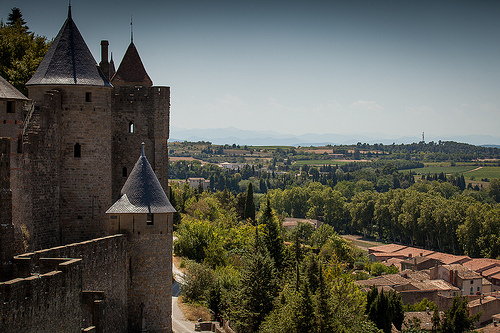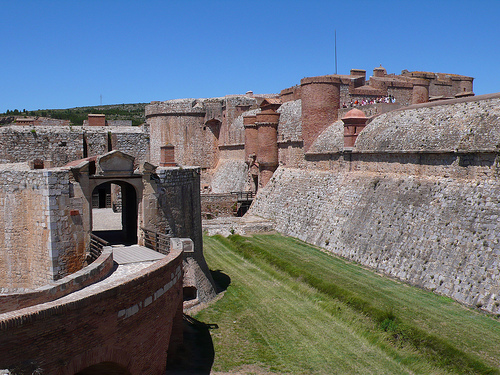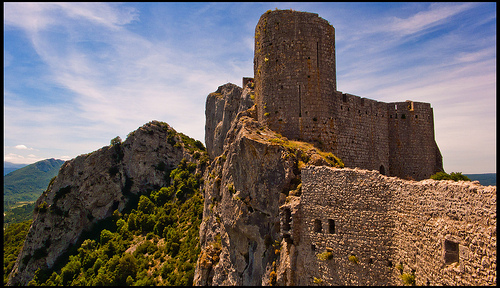
Photo credit: Guillen Perez.
France's Languedoc-Roussillon region has had a long, bloody, complicated history that has left its mark on the landscape. Medieval fortresses and Roman aqueducts rise majestically from craggy hilltops, providing intrepid visitors endless opportunities to discover hidden gems. And for those who prefer to seek out new wines and varieties of local cuisine, the Languedoc-Roussillon region's sweeping Mediterranean coastline and endless vineyards won't disappoint. This region also has a reputation for friendly locals who still speak, or at least understand, Occitan and Catalan.
A Tale of Two Peoples
Before the dawn of the 20th century the residents of Languedoc spoke Occitan rather than French. Languedoc literally means "language of yes". "Oc" was how the locals said "yes" as opposed to the now more familiar "Oui" of the northerners. Locals in the Roussillon region eschewed standard French for their own Catalan language. They were once part of Spain until 1659 when Louis XIII claimed them for the French crown. Despite the efforts of the Bourbon kings, the region remained staunchly Catalan in culture and language until 19th century industrialisation brought mainstream French influences into the region.
Follow the Roman Road
Thanks to their geographical position in the south west coast of France, the people of Languedoc-Roussillon have always weathered attacks on their land, culture and people. The Mediterranean coast of Languedoc was invaded and settled by Greeks, Phoenicians and Romans in turn. You can still see evidence of these occupations, especially the Roman settlement, in the form of ancient roads and aqueducts.
The Pont du Gard is France's fifth most popular tourist attraction and despite (or rather because) of its antiquity, still has the ability to take your breath away. The 50k-long, three level aqueduct once supplied water to the nearby city of Nimes. It opens daily from 9.30a.m.-7p.m.; closed Monday mornings, entrance costs €3.
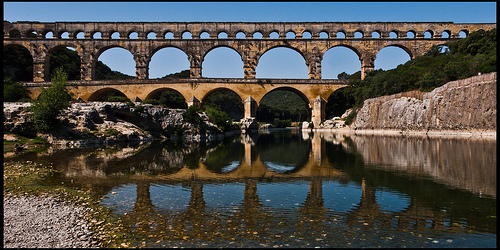
Photo credit: Guillen Perez.
Part of the Via Domita built in 118BC to connect Spain with Italy can still be seen in the town of Narbonne. Built as a trading post on the Via Domita, Narbonne, then called Narbo, was one the most important cities in Southern Gaul. After the Romans left in the sixth century it became the capital of the Visigoths. A litany of disasters including plague, burst dykes and the port silting up reduced the circumstances of this once important town until the coming of the railways in the 18th century revived the wine industry. Nowadays, despite lacking some of the grandeur of Avignon and Carcassone, Narbonne is a convenient jumping off point to reach Toulouse, Barcelona and the nearby vineyards of Corbières.
A Region of Religious Rebels
In the 12th century, Languedoc was the centre of the Cathar religious movement. Over 1 million people were killed and whole towns destroyed during the 13th century in the cause of religious freedom. The Cathars, or Bonhommes, were a group of break-away evangelical Christians whose beliefs frightened the Catholic Church so much they became determined to eradicate them completely. Pope Innocent III declared a crusade against them and the movement, led by Simon de Montfort, cost many lives despite strong resistance from the fortified Cathar castles.
The crusade officially ended in 1229 with the Treaty of Meaux-Paris. The treaty also marked the end of Occitan independence. Despite the official end of the crusade, the people of Languedoc continued in their religious practices which led to an Inquisition by the Catholic Church. The Inquisitors used the brutal combination of informers and torture to wipe out Catharism and the fall of Montségur Castle in 1244 signalled the real end of the movement.
The Cathar Trail
Today, visitors to the region can follow the Cathar Trail which runs through the Ariège and the Aude departments. The walk starts at Port-La-Nouvelle on the Mediterranean coast and finishes in the hills of Foix. The signage is designed to allow you to choose which way you want to walk the trail. So if going steadily downhill and ending with your toes in the Med suits you better then go for it. Walking the whole route takes between 12 and 14 days allowing time for cultural activities and a few long lunches. You can also cycle or ride some parts of the route, or even just drive between historic sites and towns saving your energy for the climb up to the castles.
Castles of Languedoc-Roussillon
Carcassonne Castle
The most famous castle in Languedoc-Roussillon has to be in Carcassonne. It's a little touristy and there's no end of plastic swords and fridge magnets on sale, but the fairy-tale majesty of the, admittedly modern, witches' cap turrets is hard to beat. If you want to beat the crowds then head to the viewing spot on the A61 and enjoy the view. If you do decide to go inside, entrance is free.
Salsès Fort
The stunning Salsès fort, built in the 1500s, is everything a castle should be with massive stone walls and jutting turrets surrounding a 10m deep moat. This Catalan fortress defended the former border region between France and Spain until it was captured by the French in 1642. Thanks to the period it was built, the architecture is a fascinating hybrid between medieval castle and modern fortress.
Puilaurens Castle
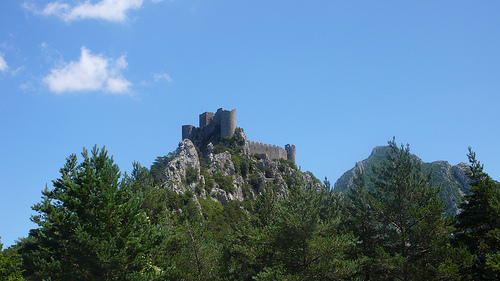
Photo credit: Wolfgang Jung.
If you want to see a truly atmospheric Cathar castle then Puilaurens is one of the best preserved. Located at the top of a 700m cliff-top it's worth the effort to reach it just for the breathtaking views of the valleys below. Entrance is €3.
Peyrepertuse Castle
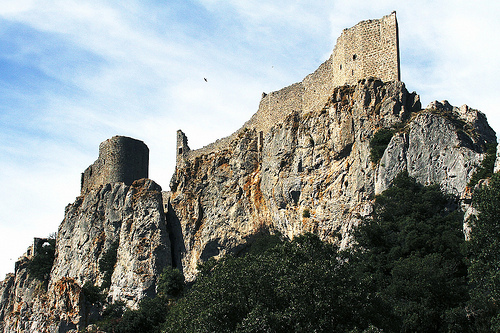
Photo credit: Claude Valette.
As the largest of the remaining Cathar castles, Peyrepertuse is certainly worth a visit to get an idea of the wild grandeur of these ancient edifices. The views across Languedoc again are worth the effort, encompassing the Mediterranean and the Pyranees. Entrance is €3.
Quéribus Castle
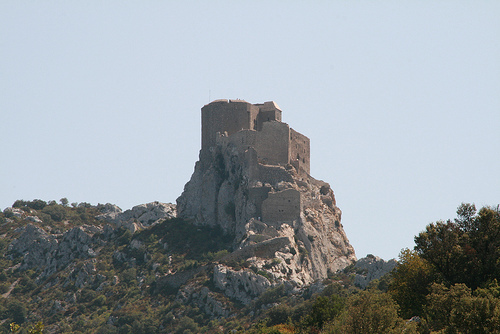
Photo credit: Gustavo Maximo.
Within sight of Peyrepertuse Castle, Quéribus Castle is one of the most famous Cathar strongholds. Built in the 10th century, it passed between the counts of Barcelona and Aragon before becoming a last stronghold of Cathar safety. The rebels fled to the castle hoping to find safety in this remote rocky outcrop. Entrance is €5.
